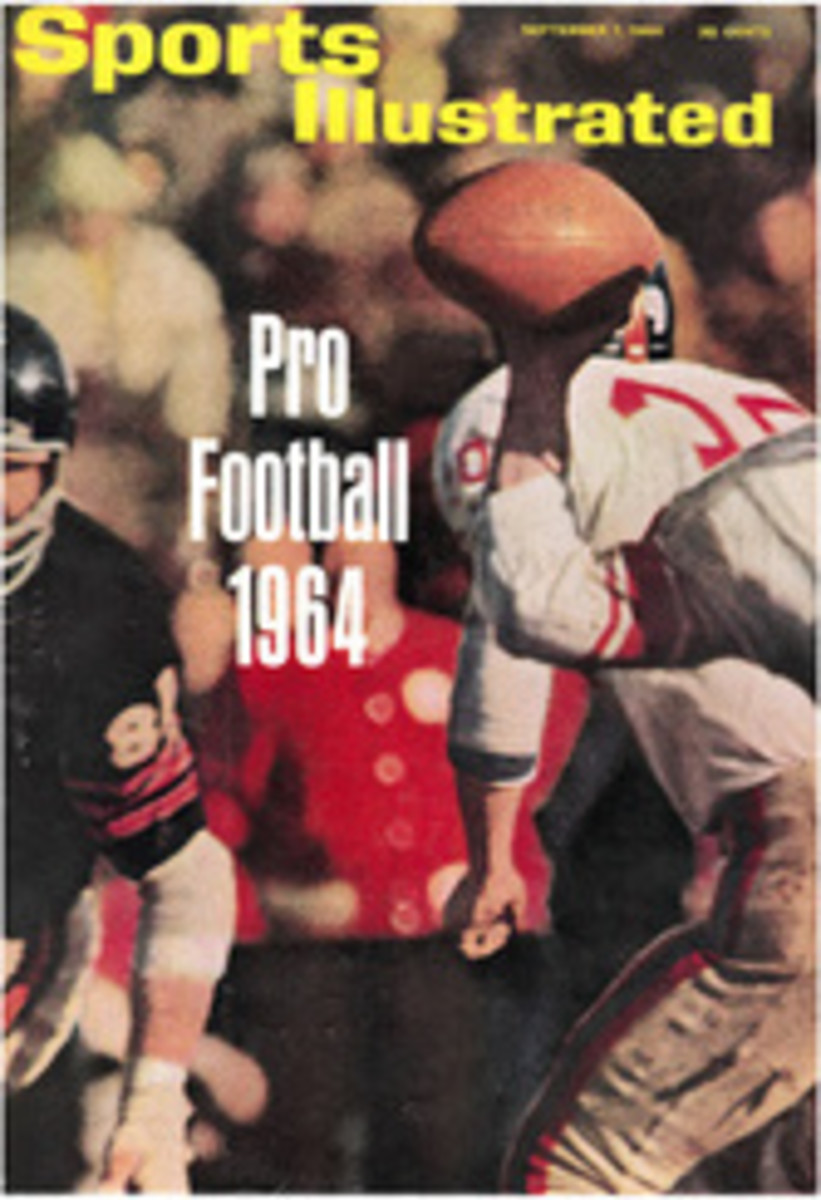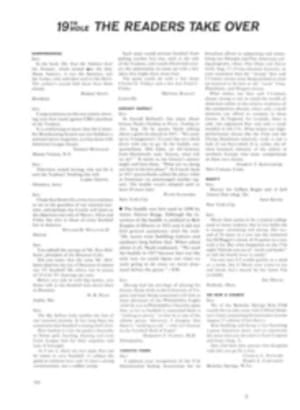
If you can't beat them, get them to join you
Milwaukee, a fortnight ago, was in the grip of a late summer frenzy, a happy state that has become seasonally habitual. The pixilated burghers caromed from baseball to football to rodeo to auto racing and generally stored up enough excitement to last until Christmas, or at least until everybody found his own car in the parking lots. In the space of a few days, the Green Bay Packers fought the Chicago Bears, the Milwaukee Braves fought Philadelphia and four rodeo cowboys—with the glass and chairs flying—fought a few of the locals in a lunch stand. Toward the end of the excitement a tornado came through and blew down a subdivision in a nearby community.
But for 38,456 Milwaukeeans at the fairgrounds, the climactic moment came at the finish of the 200-mile championship big-car race, run on a track around the outside of the rodeo arena. The record crowd knew it had seen a historic breakthrough in auto racing. With triumphant ease, the Ford Motor Company crushed all competition and ended—perhaps forever—the domination of the field by the glamorous but ancient Offenhauser front-engine roadster. To be sure, this was a moment everyone had known was coming. Most, in fact, had expected it earlier at the Indianapolis 500-mile race in May, for Ford engines and Lotus-Ford cars had won before (Jimmy Clark won the Milwaukee race last year in a Lotus). But never had they won with such planned, going-away ease. The company broke through this time with a dazzling combination of engine and chassis, which it has had all along, and something new: a corporate shutout accomplished by hiring two of the top drivers in the country it has not been able to beat any other way.
Race morning was like a company picnic in Dearborn. There on the front row of starters sat Ford-powered Rodger Ward in the outside pole, a spot he favors. Ford-powered Bobby Marshman was inside on the fifth row, within easy striking distance. Smack in the front-row, No. 1 pole spot crouched a Lotus-Ford and in it was Rufus Parnell Jones, who had been called one of the last defenders of Offenhauser's old guard. And who was that in the inside position on the second row, tamped, squeezed and crammed into another Lotus-Ford? It was the last of the old guard, A. J. Foyt.
It was a tableau calculated to warm the heart of any motor executive who ever pirated top talent away from another firm—and just inside the track Ford officials stood several deep trying to look like spectators. Still further infield bulldogging steers looked out through the slatted fences, and on the top rail sat a line of cowboys who had the day off for the races. The cowboys wore ten-gallon hats, and the Ford people wore smiles of about the same capacity.
The race was a runaway. It rained intermittently through the day—when it did not rain the water just hung there in the air—and Parnelli Jones and Rodger Ward toyed with the field of old-style roadsters, finishing in one-two order. They paid fines later for not slowing down enough when the caution light was on. In their defense, the race was not always handled as neatly as it might have been, and their minor poaching did not affect the outcome of the race. For Jones it was a record average speed of 104.54 mph, and from the 101st lap until No. 200 he drove just fast enough to twice lap Ward and to easily lead everybody else. "Oh, I had her about halfway out there," he said, "and the harder I ran her the better she went. There was still plenty of car left." It was Jones's first championship victory since he won the Indy 500 in 1963, and he spoke up right away on the future. "I am through with being a test driver for cars that don't work," said Jones. "I am definitely going to run me one of these things at Indy next year."
A. J. Foyt and Marshman dropped out of the action early; Marshman on the 39th lap when his engine burst. Foyt did not last that long. He made one fast circuit of the track and pulled back into the pits, pointing out in his own forceful manner that life for him would be considerably improved if he could get the car from second into high gear. The Lotus-Ford pit crew in green coveralls and fantastically long haircuts—they are the Beatles of racing—urged him out again, but on the second lap Foyt angrily pulled into the infield (thereby disqualifying himself), still in second gear. But Foyt's anger remained focused on the crew—not the car.
Smoking an executive cigar on the sidelines and so confident over the day's doings that he was not wearing a belt to hold his pants up was Leo C. Beebe, newly appointed special-vehicles manager of Ford. "We knew," he puffed, "this day was coming." It was just a case, he indicated, of bringing industry weight down in the right places. "We kind of backed into this victory," said Beebe. "With Jim Clark and Dan Gurney off in Europe we had these two cars available. Our signing Parnelli Jones and A. J. Foyt was a last-minute arrangement."
It was so last-minute, in fact, that another temporary driver, Walt Hansgen, had first been signed to drive Gurney's blue-and-white Lotus in the race. But in practice he slammed it into the wall and reduced it to a pile of struts and pieces, escaping with injuries that were neither minor nor serious. Since there are no garage facilities at the Milwaukee fairgrounds, Ford crewmen took the scraps to a borrowed garage across town—a kind of Gasoline Alley East—and made a new car out of two old ones. They worked all night on the project, team Lotus signed Foyt to a quick, on-the-spot contract and before the race the Texan had time for only a few practice laps. He had no practice at all in getting in and out of the low-hung car. For Foyt, who is about 200 pounds and built along the lines of Smokey the Bear, this was tougher than driving it. But he got the message.
"You know," said Foyt from his psychiatrist-couch position in the car, "this is the time for me to try something like this. I've got this year's driving championship won on points anyway and can fool around a little. My mechanic, George Bignotti, and I might buy us one of these things and campaign on our own next year. We could be our own sponsors."
Ford spokesmen admitted they would like some sort of arrangement where the two old Offy men joined them instead of fought them. "We like Foyt and respect him," said Beebe. "We'd like to make a deal with him so that he would be driving our equipment."
There is no doubt that next year the automobile world will be changed as a result of the Milwaukee race. Ford's racing engine is more than the oldtime Offies can handle, and now the company is working on a new model. Chrysler is said to be ready with something new and fiercely competitive, too. All these cars will be rear-engined.
Ford has not officially announced it yet, but England's Colin Chapman, the graying genius who builds the Lotus chassis for Ford, has been signed to a contract for another year. It is, says Beebe, an improved arrangement under which Chapman will manage the company's racing activities in this division. "We have had our difficulties," said Beebe, "but it is our intent to stay together and seek an orderly approach to racing next year."
England's Chapman has two things going for him: 1) he builds about the best race cars extant, and 2) he looks, acts and talks a lot like David Niven, which gives the sport a certain touch of tweedy class. His two cars in the Milwaukee race will be up for sale after the 200-mile race September 27 in Trenton, N.J.—and, in case you haven't guessed which company has first option to buy them, it is Ford. All of this means Jones and Foyt will likely be driving used Lotuses ("More than one of these things," cracked Jones, "and you call them Loti") on next year's circuit; Clark and Gurney will be in new models, and racing is certain to be faster than ever before. Foyt's "dinosaur," the front-engine car he drove to victory at Indianapolis, is headed for the hall-of-fame museum at the Speedway.

